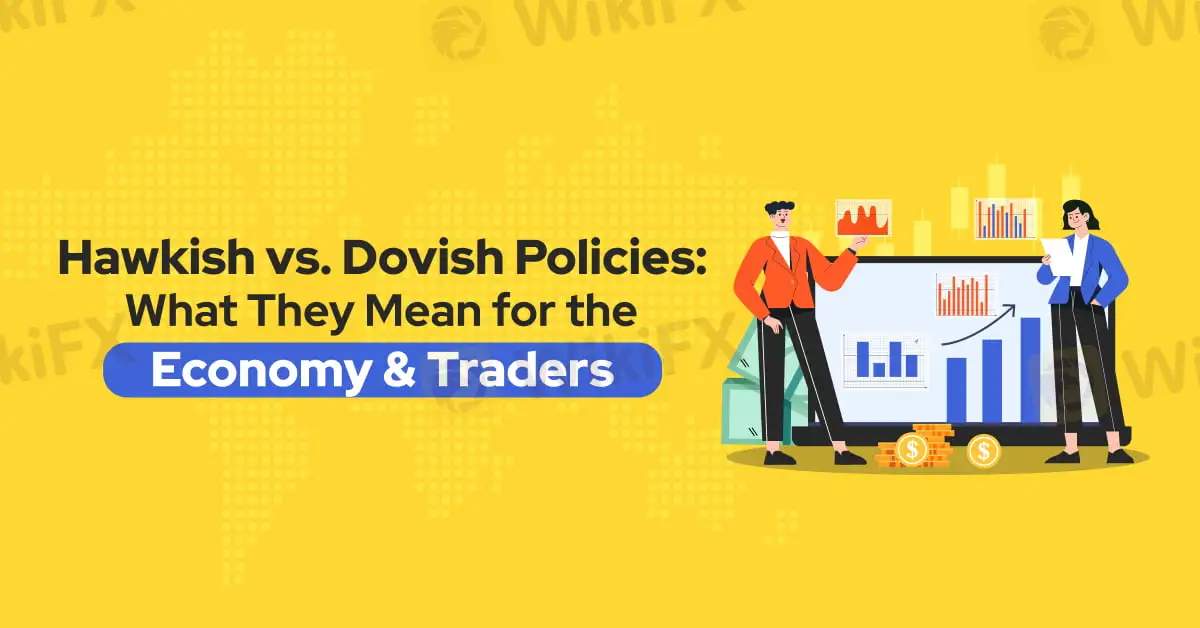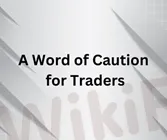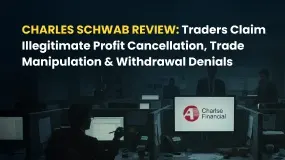简体中文
繁體中文
English
Pусский
日本語
ภาษาไทย
Tiếng Việt
Bahasa Indonesia
Español
हिन्दी
Filippiiniläinen
Français
Deutsch
Português
Türkçe
한국어
العربية
Hawkish vs. Dovish Policies: What They Mean for the Economy & Traders
Abstract:Two terms often emerge during central bank policy discussions: hawkish and dovish. These descriptors reflect the differing approaches central banks may take regarding monetary policy. Traders, especially in the forex market, pay close attention to these stances because of their significant impact on currency strength, inflation, interest rates, and overall market sentiment. But what do these terms mean, and are they inherently good or bad for a country's economy?

In economic and financial circles, two terms often emerge during central bank policy discussions: hawkish and dovish. These descriptors reflect the differing approaches central banks may take regarding monetary policy. Traders, especially in the forex market, pay close attention to these stances because of their significant impact on currency strength, inflation, interest rates, and overall market sentiment. But what do these terms mean, and are they inherently good or bad for a country's economy?

A hawkish stance signals that a central bank is focused on curbing inflation. Policymakers who adopt a hawkish approach tend to favour higher interest rates and reduced liquidity in the economy. By raising interest rates, a central bank aims to make borrowing more expensive, thus cooling consumer spending and business investment. This policy typically strengthens the national currency, as higher rates attract foreign investment and demand for the currency increases.
For traders, a hawkish announcement can signify that a currency is likely to gain value. For example, when the U.S. Federal Reserve hints at potential rate hikes, the dollar often strengthens. However, while currency appreciation may benefit forex traders, it can place added pressure on a countrys export sector, as higher currency values make exports more expensive for foreign buyers. Additionally, hawkish policies may also slow down economic growth as credit becomes more expensive for businesses and households alike.

Conversely, a dovish stance indicates a central bank's preference to stimulate economic growth, often at the risk of allowing inflation to rise. Dovish policymakers typically favour lower interest rates and increased liquidity in the economy. Lowering rates makes borrowing cheaper, encouraging businesses to expand and consumers to spend. This approach can lead to a weaker currency, as investors seek higher returns elsewhere, decreasing demand for the domestic currency.
For traders, a dovish policy suggests that a currency might weaken, which can lead to potential profit opportunities in short selling or trading currency pairs where the dovish currency is expected to decline. On a broader scale, a dovish policy aims to boost job creation and economic activity, but it can also risk overheating the economy, causing excessive inflation and devaluing purchasing power.

The impact of hawkish and dovish policies is complex and context-dependent. A hawkish policy can be beneficial in stabilizing runaway inflation, but if maintained too long, it risks stifling economic growth and increasing unemployment. Meanwhile, dovish policies can stimulate growth and reduce unemployment but may lead to inflationary pressures, impacting the cost of living.
Neither approach is universally “good” or “bad” for an economy; instead, it depends on the existing economic conditions and objectives of the central bank. In periods of high inflation, a hawkish stance may be necessary to protect purchasing power, even if it temporarily slows down growth. During economic downturns, a dovish stance may help stimulate demand, despite potential inflationary risks.

For traders, understanding the hawkish or dovish tendencies of a central bank is essential in making informed decisions. A central bank's stance can shift rapidly depending on economic data, global events, and political pressures. Relying solely on these stances without a holistic analysis can lead to rushed and uninformed trading decisions. Traders must remain cautious, analyse multiple factors, and avoid speculative moves based on central bank signals alone.
Ultimately, both hawkish and dovish policies serve distinct purposes within economic cycles. For traders, the key lies in remaining vigilant and patient, recognizing that well-timed, informed trades are more valuable than reacting impulsively to every policy shift.

Disclaimer:
The views in this article only represent the author's personal views, and do not constitute investment advice on this platform. This platform does not guarantee the accuracy, completeness and timeliness of the information in the article, and will not be liable for any loss caused by the use of or reliance on the information in the article.
Read more

Charles Schwab Review: Traders Claim Illegitimate Profit Cancellation, Trade Manipulation & More
Have you been lured into the Charles Schwab app for trading on the back of outrageous profit claims by the broker? Did you fail to receive any of these? Does the broker deny withdrawals every time you request and cancel your forex trading account? Have you been victimized financially by its trade manipulation? Act before you are left with a NIL balance in your account. Many traders have questioned Charles Schwab customer service and many other operational executives for the aforementioned illegitimate trading activities. In this Charles Schwab review article, we have shared some of their comments. Read on!

AMP Futures Exposed: Traders Raise Alarms Over Illegitimate Account Blocks & Bad Customer Service
Has AMP Futures blocked your forex trading account? Does it fail to provide any explanation for this act? Do you face issues concerning deposits to your AMP Futures account? Is the customer service non-existent for any trading query you raise with it? You are not alone! Many traders have been facing these issues upon AMP Futures login. Some of them have commented on AMP Futures review platforms. In this article, we have shared some reviews that you can look at. Read on!

FXGlory Review: Vanishing Profits, Capital Scams & Withdrawal Charges Keep Annoying Traders
Does FXGlory remove all your forex trading account balances upon fund withdrawal requests? Or do you witness incorrect trading account balances after fund withdrawals? Does the Saint Lucia-based forex broker charge you for fund withdrawals? All these and many more scam-related complaints have been filed against the forex broker. In this FXGlory review article, we will discuss several complaints. Read on!

PINAKINE Broker Review: A Complete Look at Its Services and Risks
Finding a trustworthy broker from the huge and often confusing world of online trading options is one of the biggest challenges a trader faces. In this competitive market, PINAKINE Liquidity Limited has appeared, getting attention with promises of high leverage and zero-commission trading. However, a closer look shows important factors that every potential client must think about before investing. The most important thing to consider with PINAKINE is that it has no regulation. This fact completely changes how risky the broker is and has major effects on how safe your investments will be. This review gives a complete and fair examination based on information available to the public. We will break down its services, trading conditions, platform technology, and the possible risks involved, helping you make a fully informed decision.
WikiFX Broker
Currency Calculator




